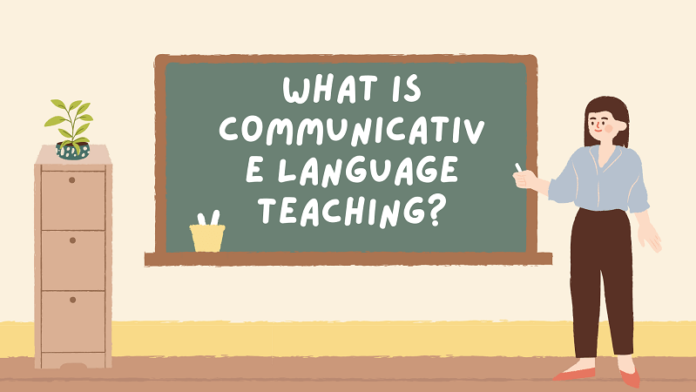Discovering new and engaging ways to help students learn languages has become a key focus for educators and parents alike. One such approach that has stood the test of time is Communicative Language Teaching (CLT). But what is CLT, and how does it support language learners in achieving fluency and real-world applicability?
This article explores CLT’s core concepts, including its goals, benefits, and roles for the teachers and students. Whether you’re a parent advocating for effective education or an educator seeking innovative strategies, you’ll find actionable insights here to foster better language learning experiences.
Research Problem
Traditional language teaching methods often struggle to prepare learners for real-world communication. While excelling in academic exams, many students find conversing in the language they’re studying challenging. This gap between theoretical knowledge and practical application highlights the need to reevaluate conventional approaches to language teaching.
The challenge lies in ensuring that learners pass written tests and develop the skills to use the language confidently in authentic contexts—whether speaking with peers, communicating at work, or traveling.Study Techniques provides expert insights to enhance your learning journey
Research Questions
To address this challenge, educators and researchers focus on several key questions:
- How can language education better prepare students for real-world communication?
- What innovative strategies can improve fluency while maintaining a foundation in grammar and vocabulary?
- How does CLT differ from traditional teaching methods, and what makes it effective?
Answering these questions helps stakeholders design curriculums and teaching strategies that are both engaging and practical for learners of all age groups.
What Are We Learning with Communicative Language Teaching?
CLT aims to teach learners practical skills that they can use in their daily lives. These are the primary focus areas:
1.Speaking and Listening Proficiency
CLT emphasizes speaking and listening activities, helping learners develop the ability to express their thoughts clearly and understand others. Conversational practice, role-playing, and discussions are often used.
2.Authentic Communication
Learners are exposed to real-life conversational scenarios, teaching them to manage various social interactions, from ordering food at a restaurant to making friends in another language.
3. Functional Language Use
Instead of overemphasizing grammar, CLT focuses on teaching language functions—how to ask for directions, greet someone, or negotiate.
4. Contextual Relevance
Vocabulary and grammar are taught in context, making it easier for learners to understand their practical application.
Why Do We Learn This Way?
Traditional, grammar-heavy approaches have been part of language education for years because they focus on measurable outcomes like written exams. However, they often fall short when it comes to real-world applications. Here’s why CLT offers a refreshing alternative:
1. Engagement Through Interaction
Human interaction is central to this teaching approach. Learners don’t just read about the language; they actively engage by using it in communication with peers and teachers.
2. Focus on Fluency Over Perfection
CLT fosters a non-threatening environment where learners are encouraged to speak freely without fear of making mistakes. This emphasis on fluency builds confidence, which is crucial for language mastery.
3. Real-World Application
Using context-based learning, CLT ensures that learners can apply their language skills in real-life situations rather than memorizing rules without understanding how to use them.
For more insights into the principles of language learning, visit British Council’s language learning resources.
Benefits of Communicative Language Teaching
CLT offers numerous advantages, which make it a preferred choice for language educators worldwide. Here are the key benefits:
1. Improved Communication Skills
Learners quickly gain the confidence required to use the language in day-to-day situations. Language becomes a tool for expression, not just an academic exercise.
2. Active Participation
Students are more involved in learning through engaging tasks like group work, problem-solving, and discussions.
3. Cultural Awareness
CLT incorporates cultural insights into lessons, helping learners understand the context and customs associated with the language.
4. Adaptability
Since it is task-based, this teaching approach can easily be adapted to suit different age groups and learning levels.
Teacher and Student Roles in CLT
Communicative Language Teaching redefines the traditional roles of teachers and students, fostering a more collaborative and interactive learning environment:
Teacher
Rather than being the sole source of knowledge, teachers act as facilitators in CLT. They:
- Create engaging activities to encourage communication.
- Monitor and guide conversations rather than dominate them.
- Provide constructive feedback to help learners improve.
- Foster an environment where mistakes are seen as learning opportunities.
Student
Learners take on a more active role in CLT classrooms. They:
- Collaborate with peers through group discussions and activities.
- Experiment with language in real-time scenarios.
- Please take responsibility for their learning by practicing outside the school.
For more resourceful strategies for organizing effective group learning, visit Education Corner’s group learning guide.
A Final Thought – Why CLT is the Future of Language Learning
Communicative Language Teaching has transformed how languages are taught, bringing a refreshing, student-centered focus to classrooms. CLT bridges the gap between theoretical knowledge and practical application by prioritizing authentic communication and contextual learning.
Whether you’re a parent exploring efficient methods for your child’s education or an educator seeking impactful teaching strategies, integrating CLT into language learning provides a pathway to success. Start small, experiment with group tasks, and watch learners grow more confident using the language in real-life settings.
Language is all about connection. And with CLT, every student gets a chance to connect confidently.


